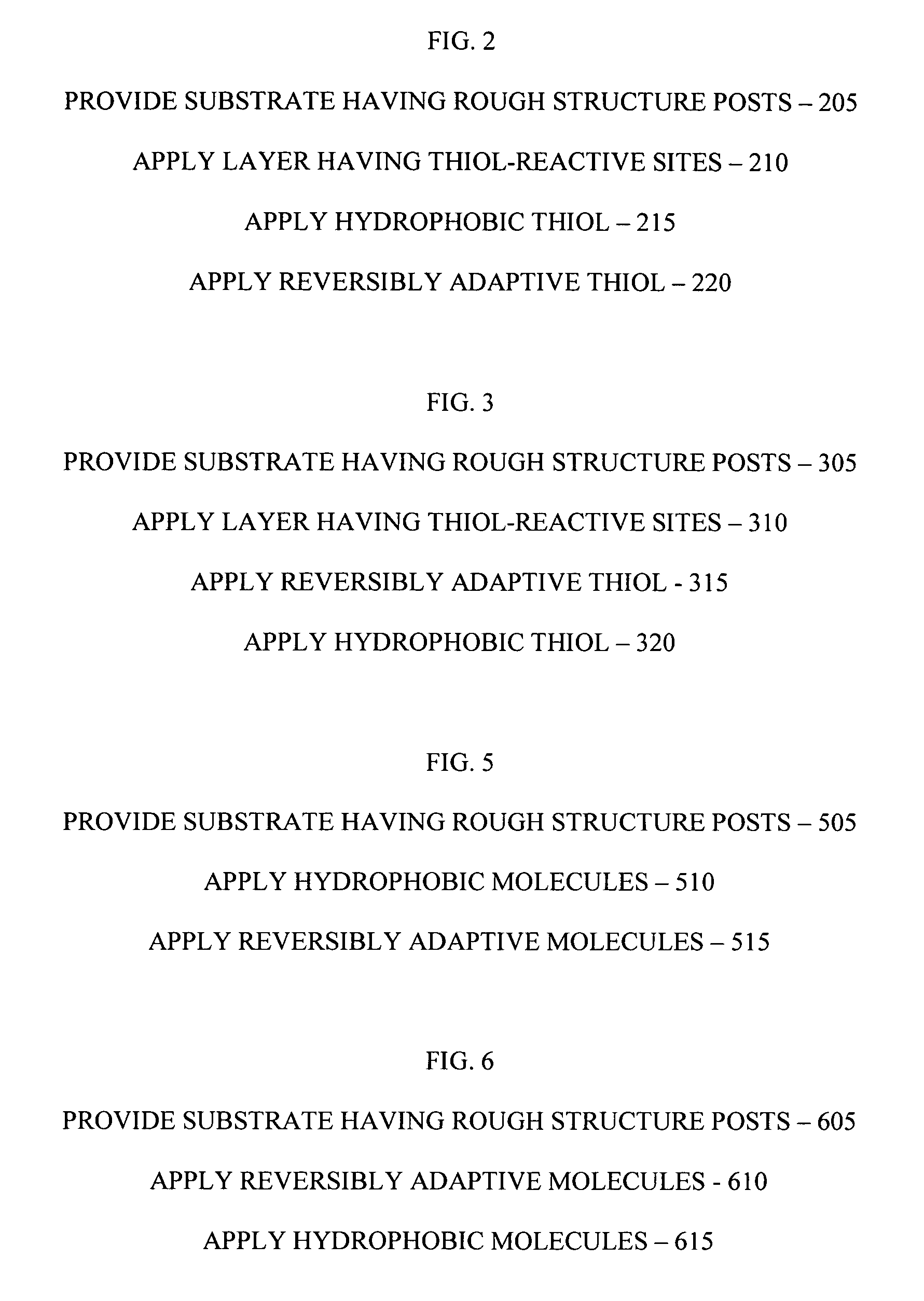Reversibly adaptive rough micro- and nano-structures
a micro- and nano-structure technology, applied in the field of surface, can solve the problems of high water repellency, very low aqueous flow resistance, and high water repellency of solid substrates, and achieve the effect of restoring the surface to a hydrophobic state, if not virtually impossible, and removing the liquid
- Summary
- Abstract
- Description
- Claims
- Application Information
AI Technical Summary
Benefits of technology
Problems solved by technology
Method used
Image
Examples
Embodiment Construction
[0018] The present invention will now be described more fully with reference to the accompanying drawings, in which several presently preferred embodiments of the invention are shown. This invention may, however, be embodied in various forms and should not be construed as being limited to the embodiments set forth herein. Rather, these embodiments are provided so that this disclosure will be thorough and complete, and will fully convey the scope of the invention to those skilled in the art.
[0019] The present invention provides reversibly adaptive rough structures and methods for making the same. These rough structures comprise raised elements spaced apart by interposed channels on a substrate. The raised elements comprise bristles and a desired portion of the bristles are reversibly adaptive. By “adaptive” is meant that the bristles can be affected by external stimuli to become either relatively hydrophobic or relatively hydrophilic. By “reversibly” is meant that these relatively h...
PUM
| Property | Measurement | Unit |
|---|---|---|
| contact angle | aaaaa | aaaaa |
| contact angle | aaaaa | aaaaa |
| contact angle | aaaaa | aaaaa |
Abstract
Description
Claims
Application Information
 Login to View More
Login to View More - R&D
- Intellectual Property
- Life Sciences
- Materials
- Tech Scout
- Unparalleled Data Quality
- Higher Quality Content
- 60% Fewer Hallucinations
Browse by: Latest US Patents, China's latest patents, Technical Efficacy Thesaurus, Application Domain, Technology Topic, Popular Technical Reports.
© 2025 PatSnap. All rights reserved.Legal|Privacy policy|Modern Slavery Act Transparency Statement|Sitemap|About US| Contact US: help@patsnap.com



